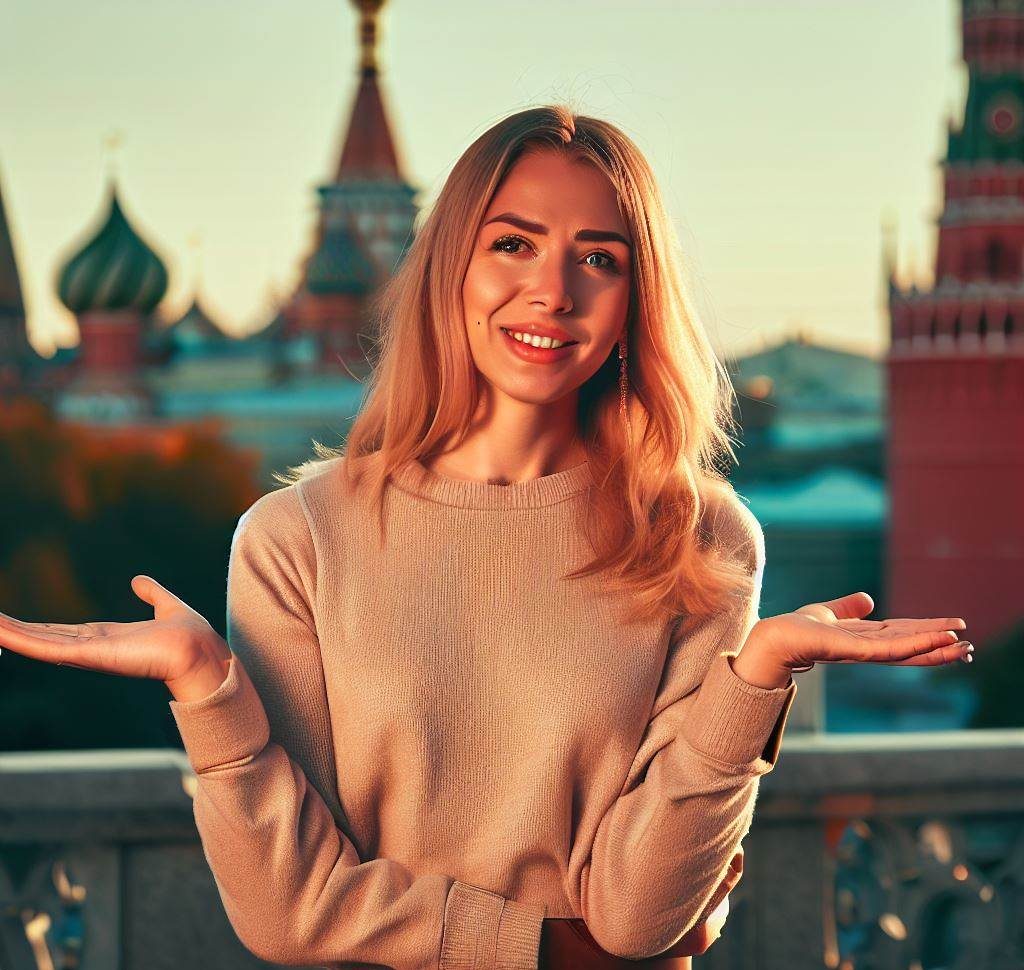
Nestled on the banks of the Moskva River, Moscow is not only the capital but also the beating heart of Russia. With a rich history dating back centuries, the city has witnessed the rise and fall of empires, the triumphs of culture, and the innovations of modernity.
From its iconic architectural wonders to its sumptuous culinary offerings, Moscow stands as a vibrant testament to Russia’s past and present.
In this article, we’ll explore the myriad things that Moscow is renowned for. From the grandeur of the Kremlin to the artistic treasures of the State Tretyakov Gallery, from the bustling Red Square to the artistic prowess of Anton Chekhov’s plays, Moscow’s tapestry of fame is woven with diverse threads.
Whether you’re a history enthusiast, a culinary explorer, an art lover, or simply curious about the city’s unique offerings, Moscow has something special for everyone.
And if you’re seeking a different kind of charm, you might want to explore what Vermont’s charm is known for. Vermont is renowned for its picturesque landscapes and vibrant culture, making it a must-visit destination. Discover more about this enchanting place here.
Contents
- 1 The Kremlin: Epicenter of Russian Power
- 2 The Red Square: Heart of Moscow
- 3 Gorky Park: A Verdant Urban Oasis
- 4 St. Basil’s Cathedral: A Kaleidoscope of Colors
- 5 Moscow Metro Stations: Architectural Marvels Underground
- 6 Poklonnaya Hill: Commemorating Victory
- 7 Embracing Religious Freedom: A Tapestry of Faiths
- 8 Museum of Cosmonautics: A Glimpse into Space Exploration
- 9 The Plays of Anton Chekhov: The Literary Legacy
- 10 Bunker 42: Cold War Secrets Unveiled
- 11 Moscow-Based Folk Dance: The Soulful Russian Spirit
- 12 State Tretyakov Gallery: Showcasing Russian Artistry
- 13 Pelmeni Dumpling: A Comfort Food Classic
- 14 Ponchiki Dumpling: Sweet Delights of Moscow
- 15 Borshch Moskovsky: A Wholesome Russian Staple
- 16 River Cruises: Moscow’s Waterway Charm
- 17 Bolshoi Theatre: A Stage of Elegance and Excellence
- 18 Conclusion:
The Kremlin: Epicenter of Russian Power
The Kremlin, located at the heart of Moscow, stands as a symbol of immense historical and political significance within Russia. Its towering walls and majestic towers have served as the nucleus of power and authority for centuries, making it an enduring testament to the country’s rich history and heritage.
For those interested in exploring other iconic features from around the world, Virginia offers a unique blend of attractions. You can learn more about these Iconic Features of Virginia on the Tales of Travelers website.
The term “Kremlin” translates to “fortress” in Russian, and this fortified complex lives up to its name. The Kremlin’s origins trace back to the 12th century, when it was established as a defensive fortress against external threats. Over time, it evolved into a political and cultural center, housing a complex of government buildings, cathedrals, museums, and palaces.
The Red Square: Heart of Moscow
Furthermore, when exploring the rich cultural tapestry of Eastern Europe, Romania’s cultural richness emerges as a captivating facet. In a similar vein, The Red Square, located in the heart of Moscow, is not just a plaza – it’s an iconic symbol of Russia’s history, culture, and national pride.
Bordered by some of the most significant landmarks in the country, the Red Square has been a witness to countless historical events and has played a central role in shaping Moscow’s identity. To delve deeper into the cultural richness of Romania, visit TalesofTravelers.com is page, “Romania’s cultural richness,” and uncover the fascinating stories that make this nation stand out.
The Red Square’s name doesn’t come from the color of its bricks or pavement, but from the Russian word “krasnaya,” which historically meant “beautiful.” It’s indeed a beautiful and awe-inspiring space that has been the backdrop for coronations, celebrations, military parades, and public gatherings throughout the centuries.
Gorky Park: A Verdant Urban Oasis
Gorky Park, situated in the heart of Moscow, is a vibrant haven that provides a refreshing escape from the city’s hustle and bustle. Spanning over 300 acres, this park has transformed from its Soviet-era origins into a modern recreational paradise. Named after the renowned Russian writer Maxim Gorky, it offers a serene oasis reminiscent of Vermont’s iconic covered bridges. Explore more about Vermont’s charming attractions on our dedicated page: Vermont’s iconic covered bridges.
The park’s expansive green lawns, tree-lined pathways, and serene ponds provide a picturesque backdrop for relaxation and outdoor activities. Locals and visitors flock to Gorky Park to bask in its natural beauty, making it a cherished gathering spot throughout the year.
St. Basil’s Cathedral: A Kaleidoscope of Colors
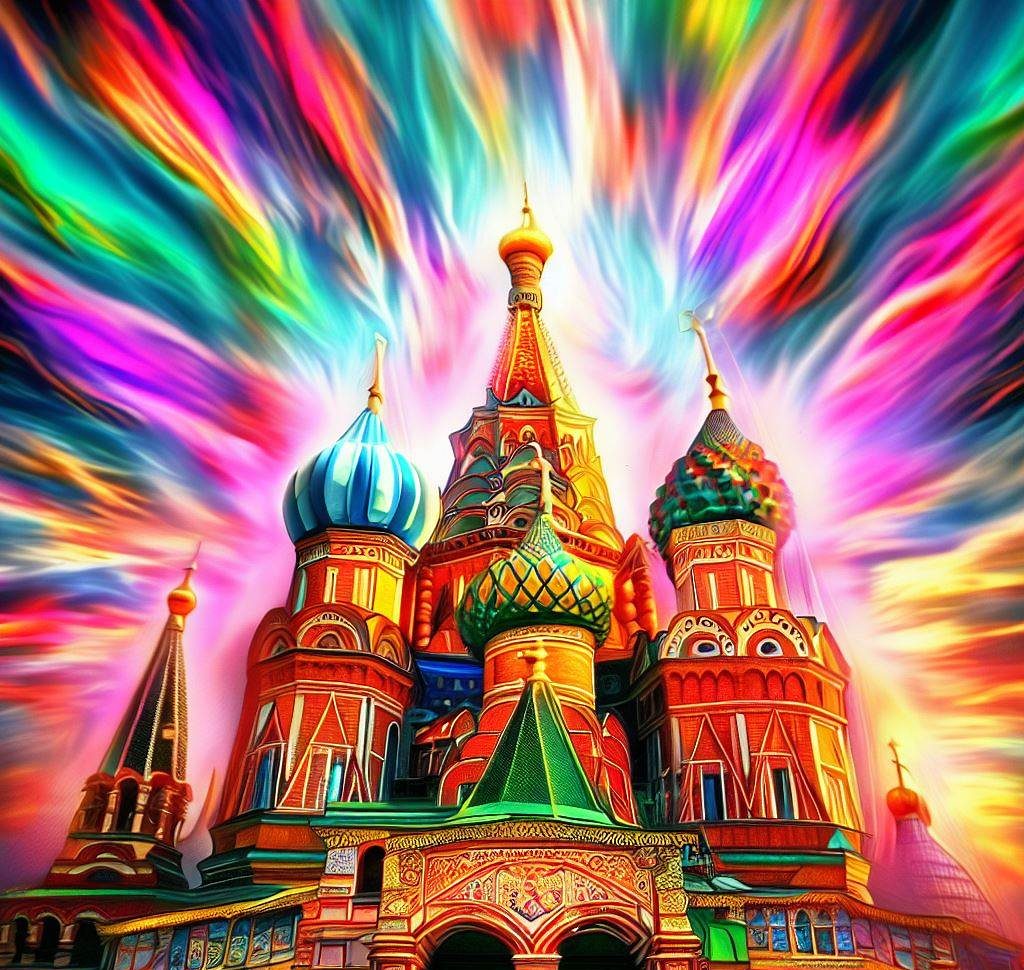
St. Basil’s Cathedral, with its vibrant and intricate architecture, stands as one of Moscow’s most iconic landmarks and a testament to Russia’s rich history and culture.
This cathedral, officially known as the Cathedral of the Intercession of the Most Holy Theotokos on the Moat, is a visual masterpiece that captivates the imagination of all who behold it.
Located at the southern end of the Red Square, St. Basil’s Cathedral was constructed between 1555 and 1561 under the reign of Ivan the Terrible.
Its unique design features nine distinct chapels, each topped with exuberantly colorful onion domes. These domes, adorned with striking patterns and hues, create a mesmerizing visual effect that is reminiscent of a vibrant kaleidoscope.
Moscow Metro Stations: Architectural Marvels Underground
The Moscow Metro isn’t just a transportation network; it’s a journey through an underground world of breathtaking architecture and artistic splendor. The metro stations in Moscow are more than just platforms to catch a train; they are veritable galleries that showcase the city’s artistic prowess.
Each station is a unique masterpiece, adorned with intricate mosaics, grand chandeliers, stunning sculptures, and ornate decorations. The designs of these stations tell stories of Russia’s history, culture, and achievements. As you descend into the depths of the metro, you’re transported to a realm of beauty and elegance.
Poklonnaya Hill: Commemorating Victory
Poklonnaya Hill, located in Moscow, holds profound historical significance as a memorial dedicated to commemorating victory in World War II. This elevated site, also known as Victory Park, stands as a symbol of Russia’s resilience and valor during one of the most pivotal chapters in modern history.
The name “Poklonnaya” translates to “bow” or “salutation,” signifying the act of bowing or paying respects. The hill’s name reflects its role as a place of reverence for those who sacrificed their lives for the victory over fascism. The monument and memorial complex on Poklonnaya Hill serve as a poignant reminder of the sacrifices made by soldiers and civilians alike.
Embracing Religious Freedom: A Tapestry of Faiths
Moscow stands as a testament to the harmonious coexistence of various faiths and beliefs, creating a rich tapestry of religious diversity. The city’s skyline is adorned with an array of religious buildings that reflect the collective spiritual journey of its inhabitants.
From the glittering domes of Orthodox Christian churches to the minarets of mosques and the elegant spires of synagogues, Moscow’s architecture embraces the essence of religious freedom. The city’s commitment to respecting and accommodating different faiths fosters an atmosphere of tolerance and acceptance.
Museum of Cosmonautics: A Glimpse into Space Exploration
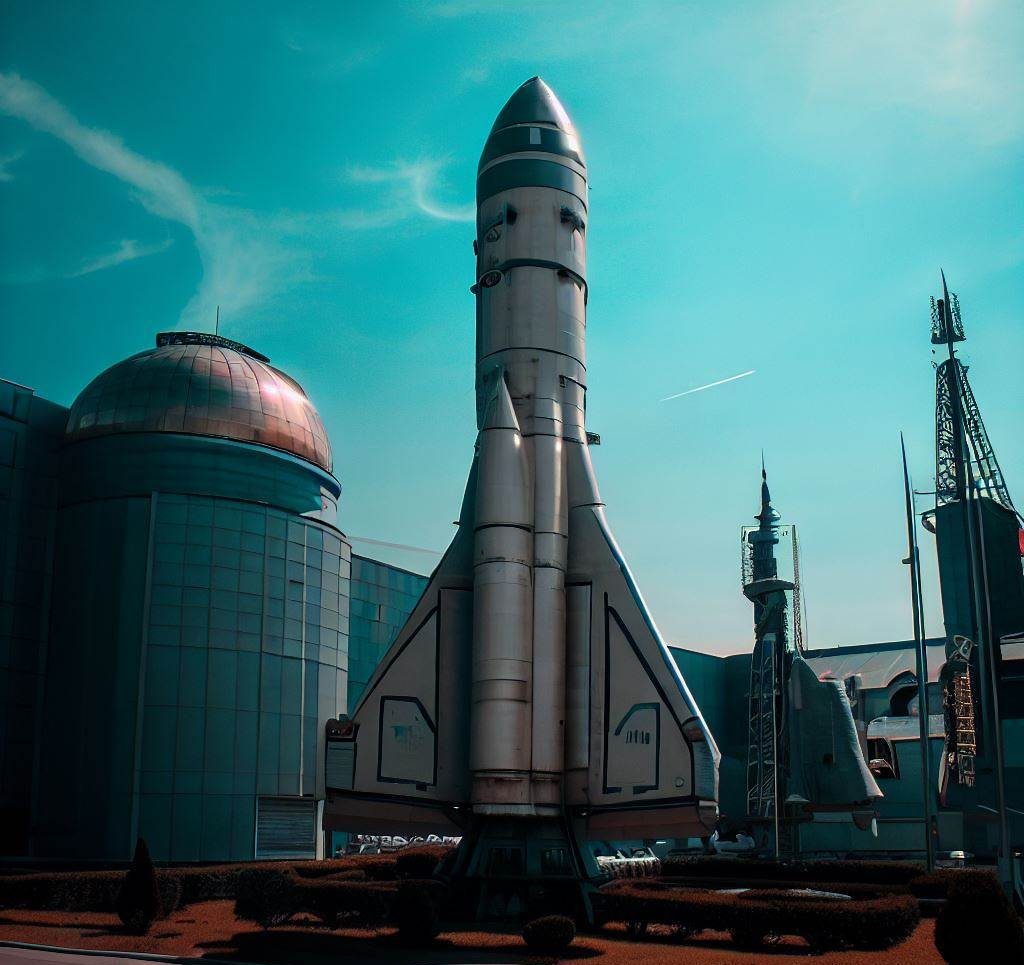
The Museum of Cosmonautics in Moscow stands as a tribute to humanity’s journey beyond Earth’s boundaries. Nestled within the soaring monuments of Soviet space exploration, this museum offers a captivating glimpse into the cosmos and the remarkable achievements of cosmonauts.
Unveiling the Cosmos: As you step into the Museum of Cosmonautics, you embark on a voyage through the history of space exploration. The museum’s exhibits showcase the pioneering spirit of the Soviet space program, which achieved numerous milestones during the Space Race.
From the launch of the first artificial satellite, Sputnik, to the historic flight of Yuri Gagarin, the first human to journey into space, the museum’s displays are a testament to the determination and scientific prowess of Soviet scientists and engineers.
The Plays of Anton Chekhov: The Literary Legacy
Anton Chekhov, a literary luminary of the late 19th and early 20th centuries, left an enduring legacy with his plays that continue to captivate audiences around the world. Born in Taganrog, Russia, Chekhov’s insightful and often bittersweet narratives have earned him a place among the most celebrated playwrights in history.
Chekhov’s plays, characterized by their poignant exploration of the human condition, seamlessly blend tragedy and comedy, reflecting the complexities of life itself. His unique ability to blend realism and subtle humor has led to the genre known as “Chekhovian drama.”
Bunker 42: Cold War Secrets Unveiled
Bunker 42, a unique museum and historical site in Moscow, offers a fascinating journey into the heart of the Cold War era. Located 65 meters below ground, this former secret bunker served as a top-secret military command center and communication hub during the tense years of the Cold War.
Constructed during the 1950s, Bunker 42 was designed to withstand nuclear attacks and maintain communication in the event of a catastrophe. Its existence was classified, and its purpose was to ensure the continuity of government operations and military command in case of a nuclear conflict.
Moscow-Based Folk Dance: The Soulful Russian Spirit
Moscow-based folk dance embodies the rich cultural heritage and soulful spirit of Russia. This traditional art form is a vibrant expression of the country’s history, traditions, and way of life. Rooted in the heart of Moscow’s artistic scene, folk dance serves as a captivating window into Russia’s soul.
These dances tell stories of the past, celebrating the resilience, joy, and unity of the Russian people. The intricate footwork, graceful movements, and intricate costumes are a visual feast that transports audiences to a different era. The soulful melodies that accompany the dances evoke a range of emotions, from nostalgia to jubilation.
State Tretyakov Gallery: Showcasing Russian Artistry
The State Tretyakov Gallery, located in Moscow, is a beacon of Russian art and culture. Established in 1856 by the merchant and art collector Pavel Tretyakov, the gallery holds an unparalleled collection of Russian artworks spanning from the 11th to the 20th centuries. It’s not just a museum; it’s a journey through Russia’s artistic evolution.
The gallery is divided into multiple buildings, with each one housing different periods and styles of Russian art. Visitors can explore the early Russian icons that reflect the country’s spiritual heritage, witness the emergence of realist art during the 19th century, and marvel at the avant-garde masterpieces that challenge convention.
Pelmeni Dumpling: A Comfort Food Classic
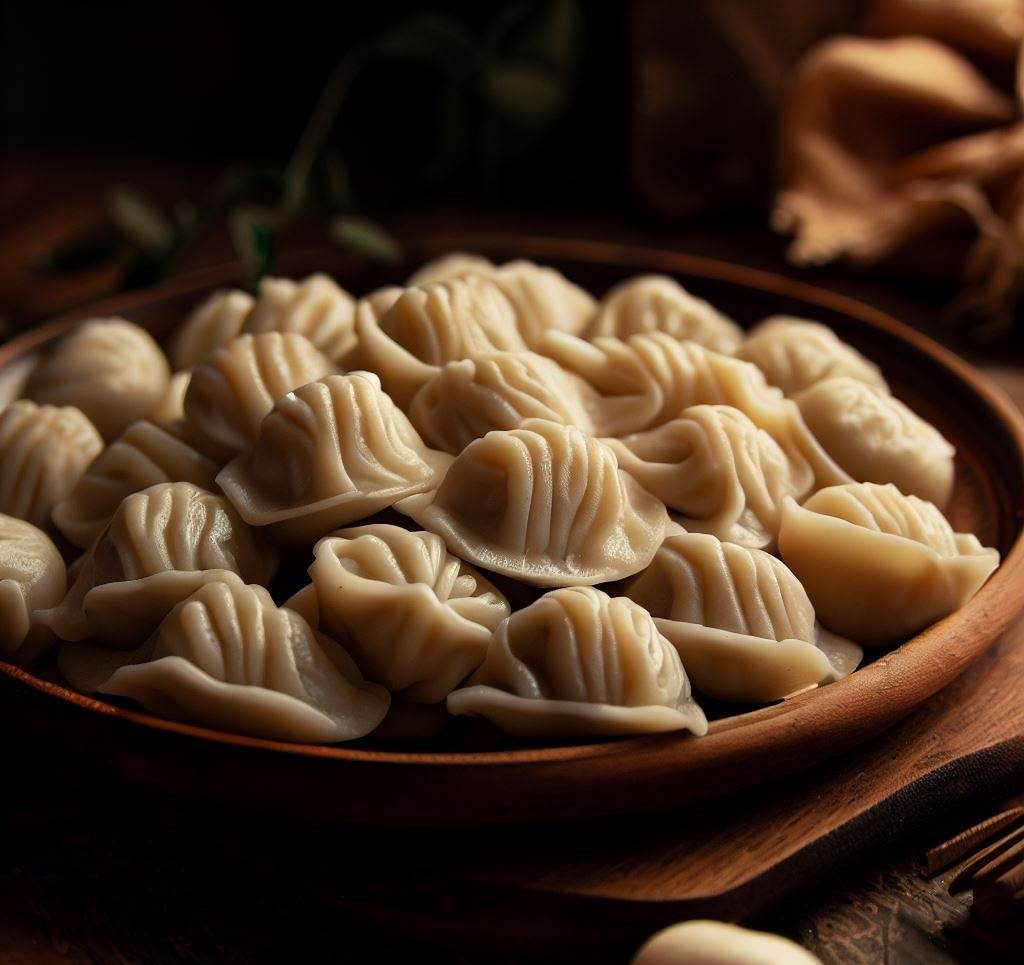
When it comes to comfort food in Moscow, few dishes hold as much warmth and nostalgia as pelmeni. These delightful dumplings are a quintessential part of Russian cuisine, offering both simplicity and heartiness that have won the hearts and appetites of locals and visitors alike.
Origins and Ingredients: Pelmeni have a humble yet fascinating history that dates back centuries. It is believed that these savory dumplings originated in Siberia and were initially created as a portable and nutritious meal for travelers and hunters. The word “pelmeni” itself is derived from the Russian word “пельнянь” (pel’nyan’), which means “ear bread.”
Ponchiki Dumpling: Sweet Delights of Moscow
Ponchiki dumplings, often referred to as Russian doughnuts, are a beloved and indulgent treat that have captured the hearts and taste buds of both locals and visitors in Moscow. These sweet delights are a testament to Moscow’s vibrant culinary scene and its ability to offer something comforting and delicious to satisfy every palate.
Origin and Preparation: Ponchiki dumplings have a rich history dating back to Russian culinary traditions. These delectable treats are made by frying rounds of dough until they turn golden brown and achieve a crispy exterior.
The dough is typically enriched with ingredients like eggs, butter, milk, and sugar, resulting in a soft and fluffy interior. Once fried, the dumplings are often coated in a layer of powdered sugar, adding an extra touch of sweetness.
Borshch Moskovsky: A Wholesome Russian Staple
Borshch Moskovsky, often referred to simply as “Borshch,” is a hearty and iconic dish that holds a special place in Moscow’s culinary repertoire. This traditional Russian soup is not only a staple in Moscow’s cuisine but also a symbol of comfort, warmth, and tradition.
Ingredients and Preparation: Borshch Moskovsky is typically made from a rich broth base, which includes beef or pork, and a medley of vegetables such as cabbage, carrots, potatoes, and onions.
The soup gets its distinctive flavor from beets, which impart a deep red hue to the broth. Beets are grated and added to the soup, infusing it with their earthy sweetness. Borshch is often seasoned with dill and garlic, enhancing its aromatic profile.
If you’re interested in exploring more about Hungary’s culinary delights and hidden gems, check out our page on “Hidden gems in Hungary” for a deeper dive into the country’s lesser-known treasures.
River Cruises: Moscow’s Waterway Charm
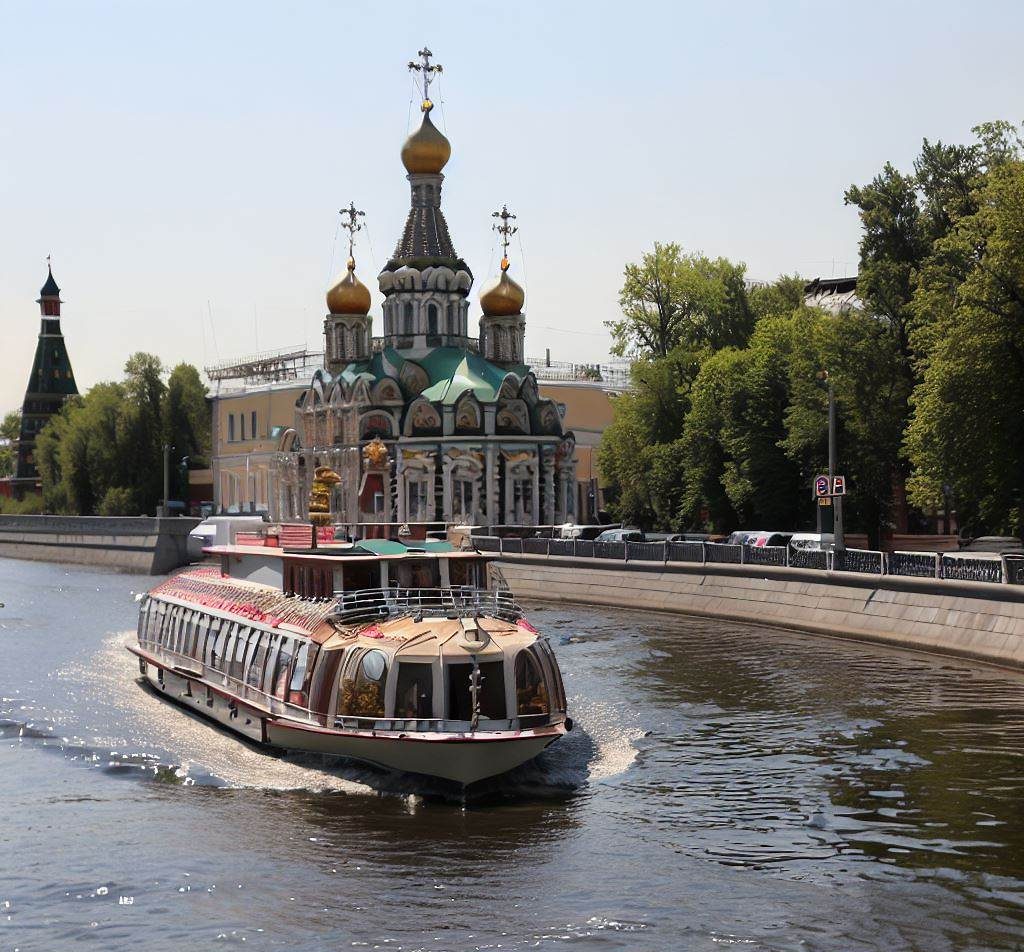
Embarking on a river cruise along the Moskva River is an enchanting way to experience Moscow’s beauty from a different perspective. As the city’s waterways gently meander through its heart, river cruises offer a unique vantage point to admire the iconic landmarks and architectural wonders that line the banks.
Unveiling Unforgettable Views: The glistening waters of the Moskva River provide a serene backdrop for a leisurely cruise. Passengers aboard these cruises are treated to breathtaking views of Moscow’s most famous sites, including the Kremlin, St. Basil’s Cathedral, the Red Square, and the Moscow City skyscrapers.
Bolshoi Theatre: A Stage of Elegance and Excellence
The Bolshoi Theatre in Moscow stands as a timeless beacon of artistic brilliance and cultural significance. Established in 1776, it is one of the world’s most renowned opera and ballet venues, and its name “Bolshoi” translates to “big” or “grand” in Russian – a fitting description for a theater that has consistently delivered grand performances.
The Bolshoi Theatre, known for its elegance and excellence, stands as an epitome of opulence in the world of performing arts. Its magnificent architecture, featuring intricate decorations and majestic columns, perfectly mirrors the grandeur of its awe-inspiring performances.
The theater’s façade, complete with a grand entrance and iconic steps, is truly a sight to behold, inviting patrons into a world of enchantment that’s deeply rooted in rich Russian traditions. To explore more about the cultural heritage and influences that have shaped this iconic institution, you can delve into this comprehensive guide on Russian traditions.
Conclusion:
Moscow’s fame transcends its historical significance; it’s a city of cultural treasures, architectural wonders, and culinary delights. From the grandeur of the Kremlin to the artistic brilliance of St.
Basil’s Cathedral, from the diverse culinary offerings to the soulful rhythms of folk dance, Moscow captivates the senses and ignites the imagination. With a tapestry woven from the threads of history, art, and culture, Moscow stands proudly as a global city that continues to inspire and amaze.
